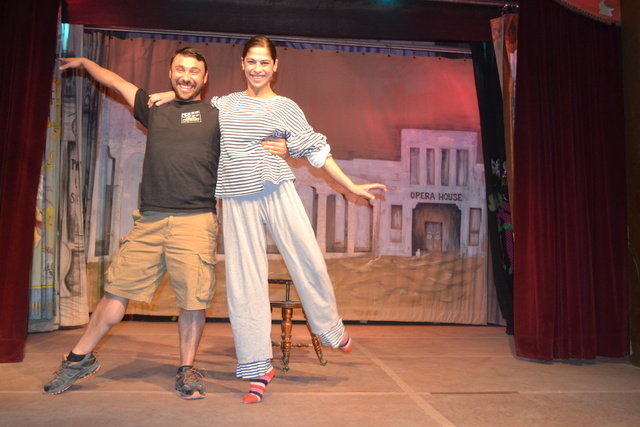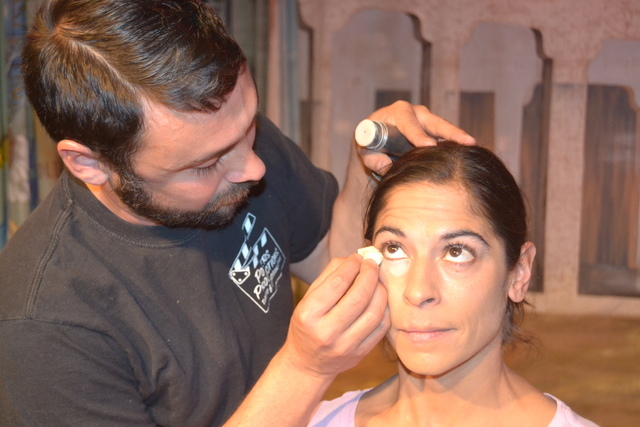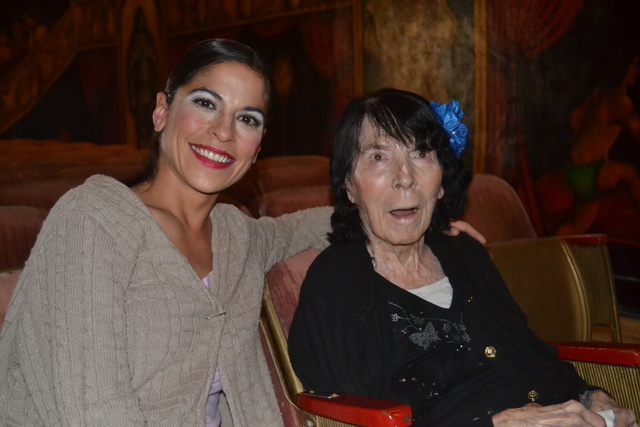SPIRIT OF THE DANCE: A labor of love brings ballet back to the desert
A former prima ballerina has retired from company performances to dance in the desert.
Jenna McClintock, originally from Oakland, Ca. has relocated to Death Valley Junction to star in the the one-woman, three-act show which replicates the work of Marta Becket, founder of the Amargosa Opera House. In recreating Becket’s original choreography, McClintock embodies Becket’s essence and then channels that spirit into her performance.
McClintock enjoys the spotlight. Though performing solo is vastly different from working with a company of other dancers, McClintock does not feel as though she is alone. “I am dancing with my history, with the dance gods and the spirits of my friends that are living and not living,” she said.
She also believes that she is dancing with more ephemeral spirits - the ghostly kind. McClintock said that before coming to the Amargosa Opera House, she considered herself a “non-believer” in such things. However, she relayed the story of taking the stage for the first time, where she had an experience that spooked her.
Alone in the opera house, she was rehearsing, when she heard footsteps crossing the stage toward her. Alarmed by a second experience a few moments later, she fled the theater.
McClintock’s production manager, Gregory Perez, had a similar experience while readying the stage for a performance. “It was a gentleman,” he said, convinced. Neither feel threatened, but consider a “presence” as an “energy shift.” Perez compares a presence to “a change of texture of the air.”
McClintock relayed a more recent incident in which her bedroom window “was flung upward” during the middle of the night. It was the night, she said, that she removed a piece of furniture from former miner housing on the grounds, locally referred to as “Spooky Hollow.”
McClintock, who resides on the premises, wanted to re-purpose a chair for her own living quarters. After being awakened, she said, she rose from her bed and closed the window, while having a conversation with thin air. “I had a down-to-earth conversation with it, whatever it was, that I was into recycling,” she said.
The presence, the pair agreed, does not interfere with the show; rather they attribute any strange occurrence to the intricacies of live theater.
Of her performances, McClintock said that like Becket, she strives to preserve historical ballet. Ballet, she said, is a language of movement used to tell a story. McClintock also likens ballet to abstract art which uses form and lines. Becket, according to McClintock, has preserved the classical, romantic style of ballet, with the first two pieces of choreography titled “Romance” and “Kewpie Doll.”
Though McClintock remains true to Becket’s choreography, her ballet is performed with a “difference dialect.” The are different forms, as well. One is modern, while the other is classic. McClintock explains that her ballet is nuanced. “I can’t express romantic love and wishful thinking like she (Becket) does. The way I bat my eyes would be very different. We use our shoulders differently, but we achieve the same story,” she said.
Becket said she has high regard for McClintock. “Jenna is preserving the past, such as I have done with my repertoire through the years,” she said. Becket said that people often mistake McClintock for her, and she sees that as a compliment.
The third act, a pantomime, continues to evolve through its performance, Becket said. The piece, titled “Gossip” depicts two Victorian women viewing a cabaret dancer with disdain.
Becket designed and painted the interior of the opera house, which tells a remarkable story on its own. “I’ve seen ballet and classical music performed in sterile concert halls. I decided to make one for myself that would be complimentary to the classical style that I’ve used,” she said of the painted images.
A life of ballet is a life of discipline, McClintock said. She has dedicated her life to art, which she said, is overlooked in this country. She considers herself an art warrior on a mission. “I am in the middle of nowhere and look, just look, at what can be done with art,” she said.
Each performance is a study of the human condition, which may be used in her next performance.
“We study everyone. Ourselves and others. We are a reflection of the audience,” she said. In her continual study she has learned about herself. “I am a simple person, who is extremely complex. I constantly contradict myself,” she revealed.
The show has been extended to run at least through April at Death Valley Junction, Calif. Performances are on Friday and Saturday nights at 7 p.m. and Sundays at 2 p.m. Ticket prices are $20 per person. For more information or reservations call 760-852-4441.



















